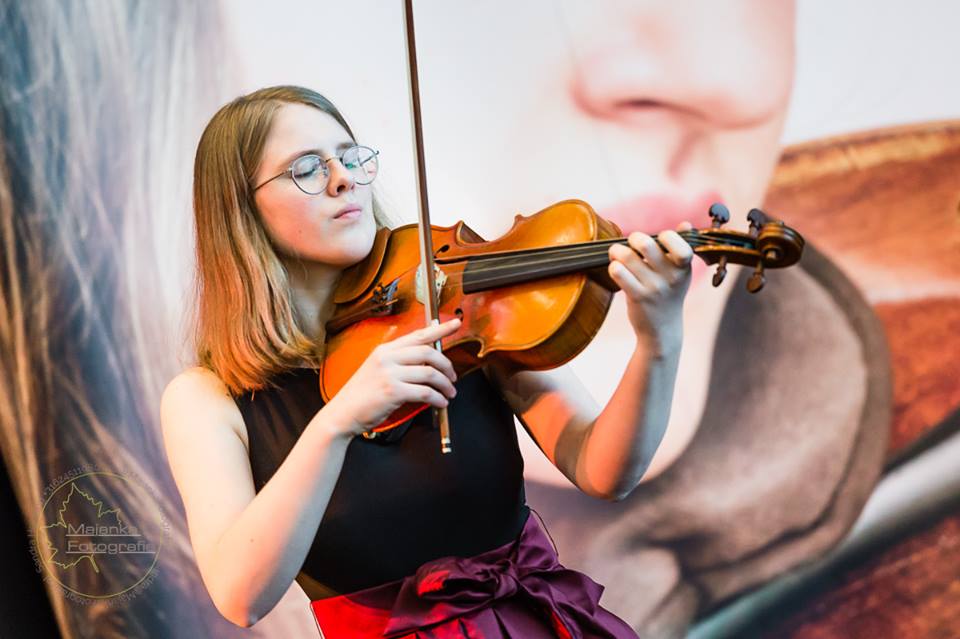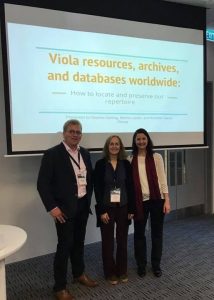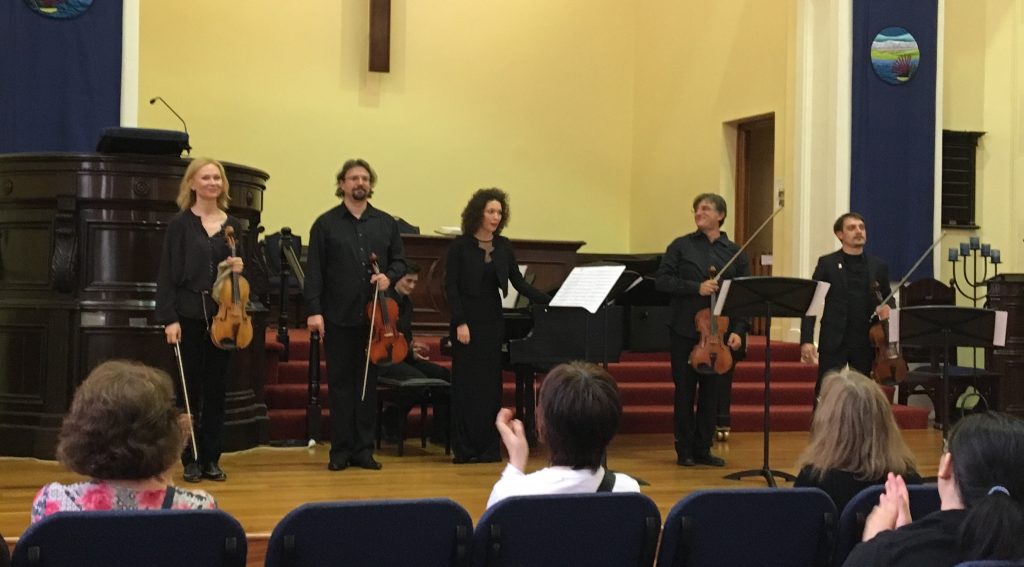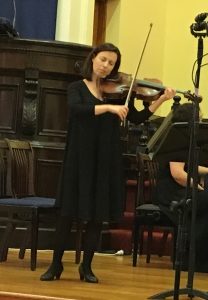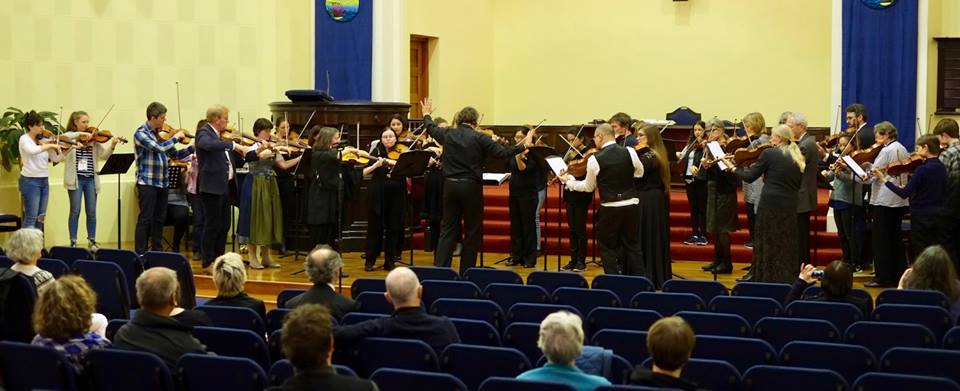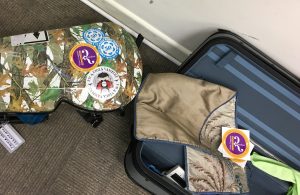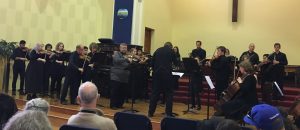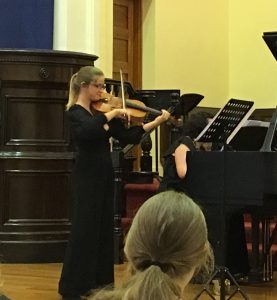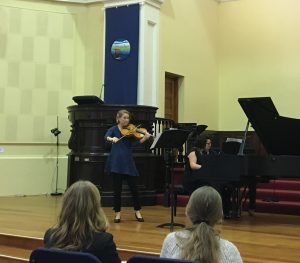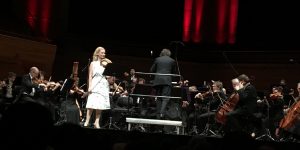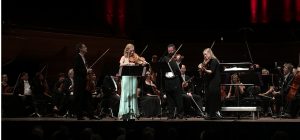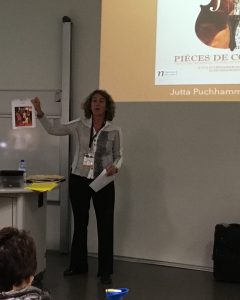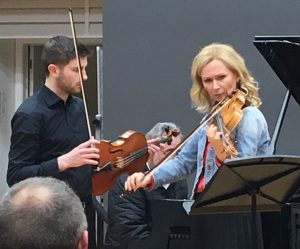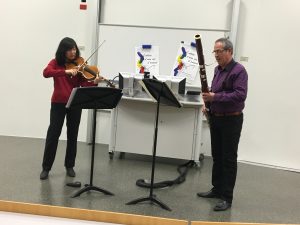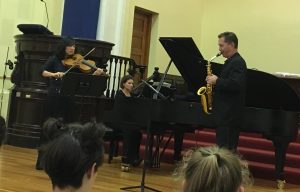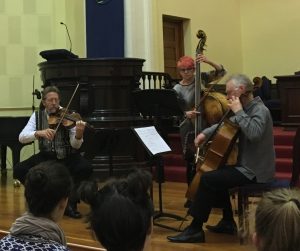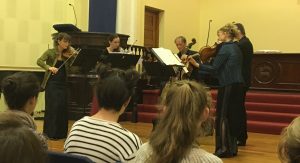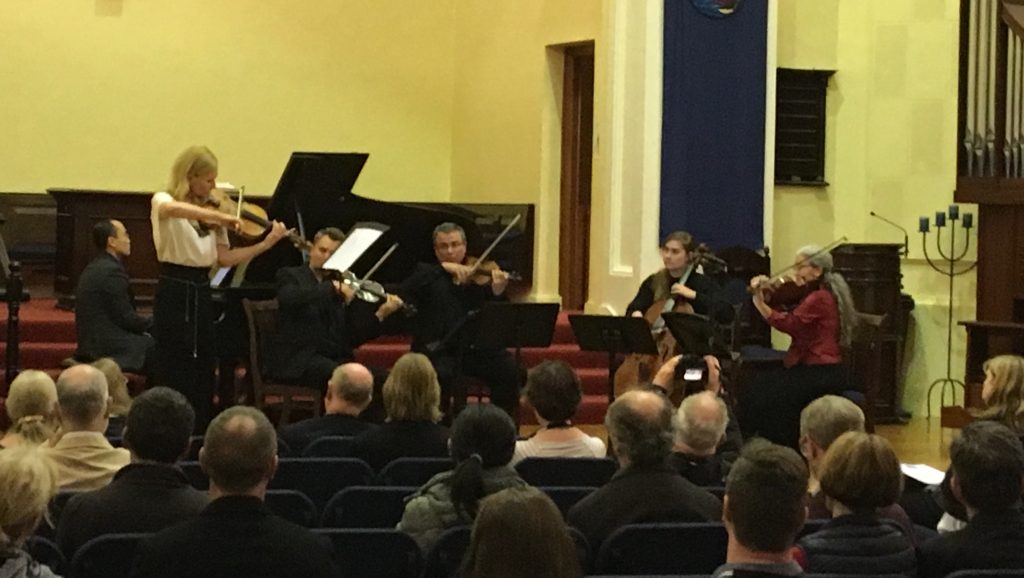The 46th International Viola Congress takes place in Poznan (Poland) from Sept. 24th – 28th, 2019. Your intrepid bloggers Karin Dolman and Kristofer Skaug bring fresh reports daily from this temporary hotspot of the viola universe.
Day 5: Saturday, September 28th, 2019
<previous day>
Time flies, we have arrived at the last day of the 46th International Viola Congress. Days have been filled to the brim with viola music, and as much as I love the instrument, the music and the many great people who participate at the congress, everyone has his/her physical limits. So I had to concede this morning’s presentations to some self-healing sleep. This meant, unfortunately, missing Xi Liu‘s lecture-recital on Boris Pigovat’s viola works, including the live premiere performance of his viola quartet version of “Nigun” (a string quartet originally written in 2010 – sheet music presumably soon to become available on the composer’s website). I also missed Jesse Maximo Pereira‘s recital of Brazilian Music.
But let’s move on to what I didn’t miss: Kenneth Martinson‘s very interesting lecture-recital about the viola music of Marco Anzoletti (1866-1929). He started off with a very well-prepared performance of Anzoletti’s Viola Sonata (1900), with Krzysztof Sowinski at the piano.
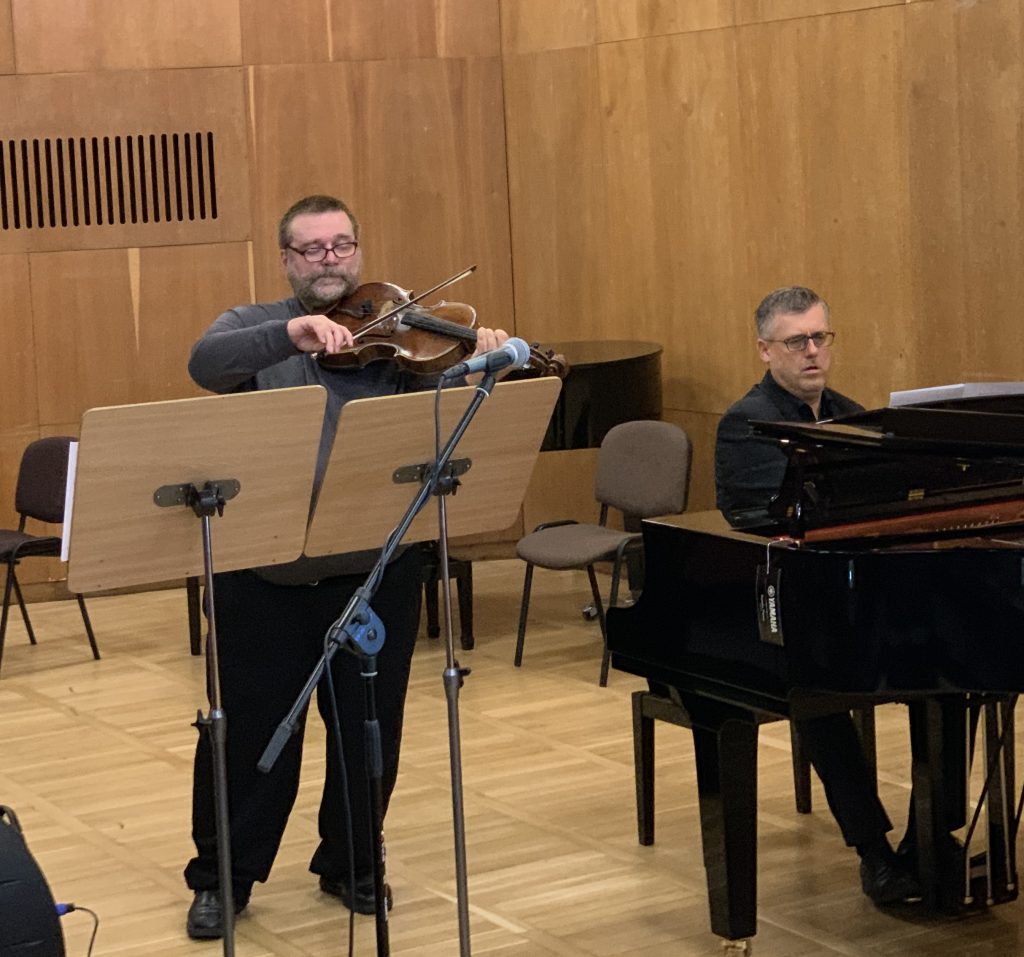 Martinson opened the lecture part of his presentation by postulating that Anzoletti’s bundle of twelve studies (caprices) for viola are a cornerstone of his music, and are some of the most difficult etudes ever written for our instrument. In support of this claim, he screened the Youtube performance of Anzoletti’s Caprice no.2 by Marco Misciagna – a real tour de force of virtuosity indeed. (Footnote: this caprice is written in the oddball key of D# minor – Anzoletti liked to use ALL key signatures from the circle of fifths – and he would ask his students to study each etude in each possible key, transposing on-the-fly!).
Martinson opened the lecture part of his presentation by postulating that Anzoletti’s bundle of twelve studies (caprices) for viola are a cornerstone of his music, and are some of the most difficult etudes ever written for our instrument. In support of this claim, he screened the Youtube performance of Anzoletti’s Caprice no.2 by Marco Misciagna – a real tour de force of virtuosity indeed. (Footnote: this caprice is written in the oddball key of D# minor – Anzoletti liked to use ALL key signatures from the circle of fifths – and he would ask his students to study each etude in each possible key, transposing on-the-fly!).
Anzoletti wrote a number of works for viola, here’s a brief overview:
- Viola sonata
- Sonata for viola and organ
- 2 Viola concertos (without orchestration, optionally for piano)
- Trio for viola-cello-piano
- 2 sonatas for viola-cello
- The “infamous” 12 studies (Caprices)
- Numerous shorter pieces, scherzo’s etc.
He wrote four of those works for viola in only a 3-week span of April 1900 – a strange and unexplained peak of viola productivity!
Martinson played the opening from Anzoletti’s Viola concerto no.1 in F minor (1900 – “The Brahms concerto we never had”) – based on MIDI playback from his own Finale score playback. Anzoletti’s complete cataogue contains more than 2000 works. A number of these are now available from Martinson’s Gems Music Publications.
It remains a mystery why Anzoletti’s music has not been played more. Martinson briefly summarized the composer’s life and career, first as violin soloist and later as a revered professor and composer at the Milan Conservatory. In spite of promising acclaim (contest prizes, peer recommendations e.g. from Brahms), his oeuvre somehow never “took off” with the greater public. Nevertheless, as this lecture-recital demonstrates, there are good reasons to give this composer a second chance!
The next lecture-recital was delivered by Greg Williams (adjunct viola professor at the City University of New York), presenting the three solo viola sonatas by the German-Jewish composer Günter Raphael (1903-1960). Raphael was extremely fortunate to survive the hell of WW2 Germany, in spite of extreme persecution, thanks to help from connections and his Danish in-law family. His health was chronically threatened by tuberculosis, so he spent a good deal of time in sanatoriums, where doctors helped to hide him from the authorities.
Raphael was a multi-talented composer and musician (pianist, organist, violist and violinist). In his prolific oeuvre there are several works for or with viola:
- 3 solo viola sonatas (1924, 1940, 1946)
- 2 romances (1923)
- 2 sonatas for viola and piano (op.13/1926, op.80/1957)
- Concertino for viola and chamber orchestra (1941)
- Duos for violin and viola and viola/cello, op 47 (1941)
The viola solo sonatas have influences from the Reger suites, Hindemith’s solo sonatas and the Ysaÿe solo violin sonatas. Williams presented each of these sonatas in turn:
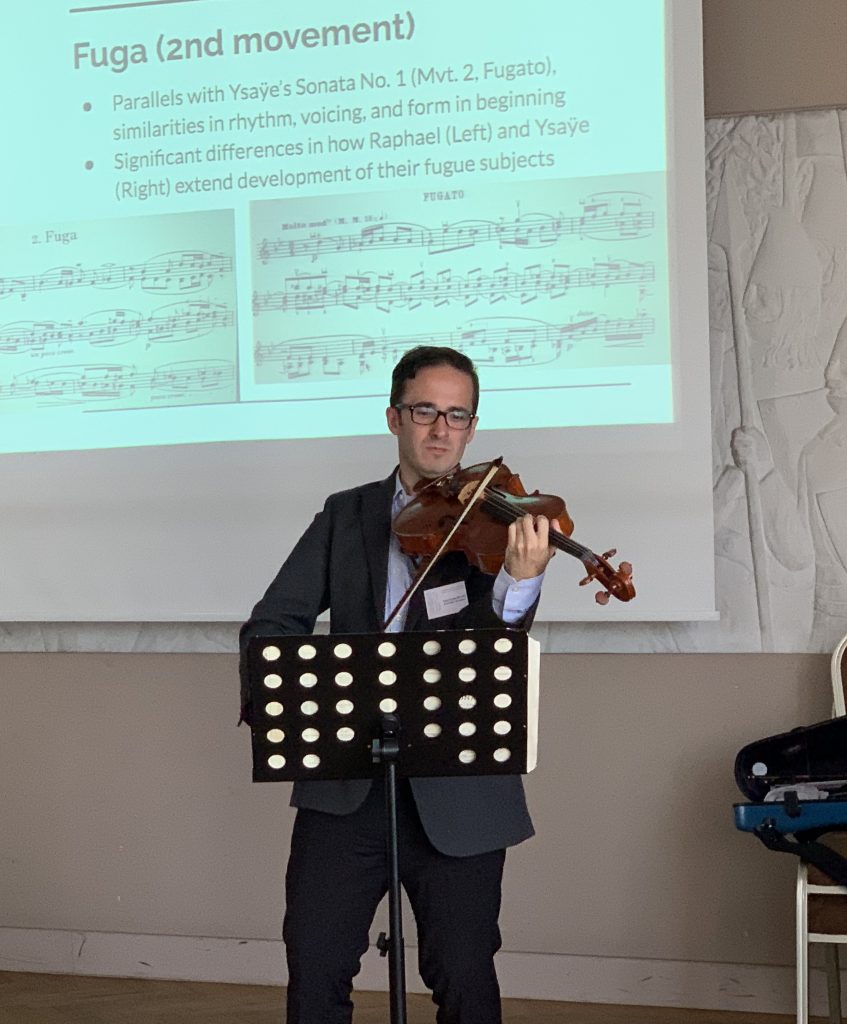 The first sonata op.7 no.1 (1924) was clearly inspired by Reger. It is in C minor and has 6 movements. Some details:
The first sonata op.7 no.1 (1924) was clearly inspired by Reger. It is in C minor and has 6 movements. Some details:
1. Praeludium: syncopated, chromatic, shifts across barlines
2. Fuga: similarities to Ysaÿe’s solo sonata no.1 mvt 2
The 2nd sonata, op.46 no.3 (1940) is written in 3 movements, and dedicated to Ernst Krenek. Some attention was given to the 1st movement, with layering of 3 voices, octatonic scaling and unannounced bar-length changes and other metrical dissonances.
The 3rd sonata op.46 no.4 (1946) is characterized by the total absence of barlines, the music bordering on atonal.
Greg Williams played one or two movements from each sonata, very beautifully done. He has also recorded all 3 solo sonatas (complete) last month as part of his Ph.D. work, the album hopefully to be released next year. Looking forward to that!
The 3 o’clock lecture by David Swanson and Jordan Wright had been spontaneously moved up to the 10am slot this morning (where master classes had been cancelled), so unfortunately we missed also this presentation, with the curiosity-evoking title “MyViola – New Technologies for Achieving Accessible String Instruments for those with Disabilities“.
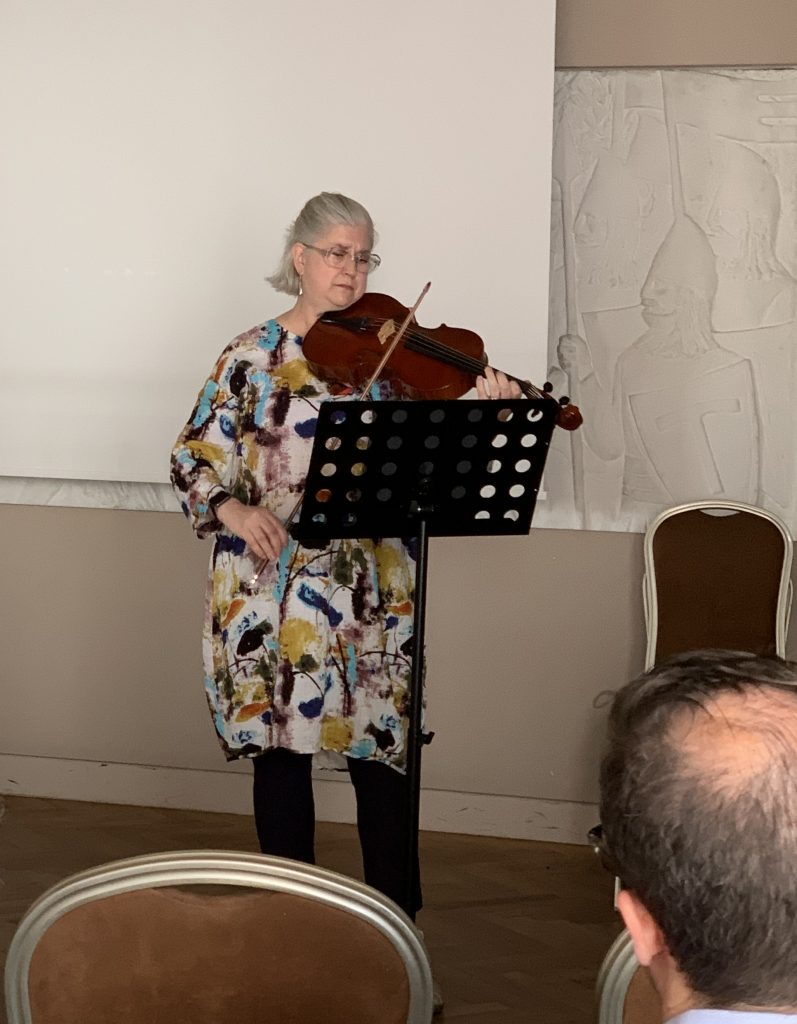 So we had to wait a bit for the next recital, by Christine Rutledge: “Bach and the Poets: Slow Dancing” – an evolution of a presentation she gave last year in Rotterdam (and I missed it then!). Poets from Rutledge’s birthplace of Detroit, Michigan contributed their works (recited on prerecorded videos) to mesh with Rutledge’s performance of various movements from the Bach cello suites. Indeed, poetry and Bach combined well together to a meditative whole.
So we had to wait a bit for the next recital, by Christine Rutledge: “Bach and the Poets: Slow Dancing” – an evolution of a presentation she gave last year in Rotterdam (and I missed it then!). Poets from Rutledge’s birthplace of Detroit, Michigan contributed their works (recited on prerecorded videos) to mesh with Rutledge’s performance of various movements from the Bach cello suites. Indeed, poetry and Bach combined well together to a meditative whole.
Following this performance, we were treated to a recital of “Late Romantic Chamber Works for Tenor, Viola and Piano” in the POSM Recital hall. Tenor Richard Novak was joined by violist Ames Asbell and Joey Martin on the piano. For those of us who thought that the classical viola + vocals chamber repertoire was limited to Brahms’ Zwei Gesänge, this was an eye- (and ear-) opener!
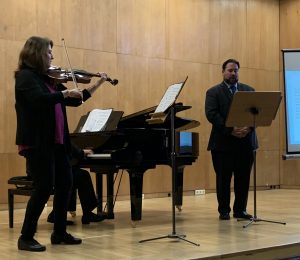 The Four Hymns for Tenor, Viola and Piano (1914) by Vaughan Williams is a song cycle based on poems by Jeremy Taylor, Isaac Watts, Richard Crashaw and Robert Bridges (translation from Greek text).
The Four Hymns for Tenor, Viola and Piano (1914) by Vaughan Williams is a song cycle based on poems by Jeremy Taylor, Isaac Watts, Richard Crashaw and Robert Bridges (translation from Greek text).
Sergei Rachmaninoff’s Five Songs for Tenor, Viola and Piano is a 2013 arrangement by Lorin Chisholm of songs originally only with piano accompaniment, adding a viola obbligato voice. The 4th song (op.4 no.4), however, has an obbligato written by Rachmaninoff himself, for Frits Kreisler. The sheet music, by the way, can be purchased here.
Tenor Richard Novak brought these songs with great conviction, and viola and piano realised a good complete sound picture. Thanks to Ames Asbell for bringing these rare works to the IVC, a very welcome diversification of the overall programme!
This beautiful recital was followed by the official “Closing Concert” of this IVC. The first part of this concert was in the safe hands of IVS Vice-president Jutta Puchhammer-Sedillot and pianist Paul Stewart. The programme title read “About Phantasies and Legends – rarely interpreted English music written for viola and piano in the era of Lionel Tertis“.
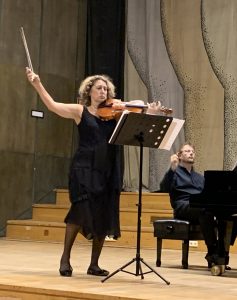 The program consisted of York Bowen’s Phantasie (1918), Arnold Bax’s Legend (1929) and Benjamin Dale’s extensive piece Phantasies op. 4 (1909). I have great recordings of all these pieces, but this was the first time I was privileged to hear them live; Jutta mastered them all with beautiful sonorosity and fearless virtuosity. She is a truly amazing violist… (could it be all those Pièces de Concours that she keeps practicing?). For this performance she received an extensive, heartfelt and totally deserved applause.
The program consisted of York Bowen’s Phantasie (1918), Arnold Bax’s Legend (1929) and Benjamin Dale’s extensive piece Phantasies op. 4 (1909). I have great recordings of all these pieces, but this was the first time I was privileged to hear them live; Jutta mastered them all with beautiful sonorosity and fearless virtuosity. She is a truly amazing violist… (could it be all those Pièces de Concours that she keeps practicing?). For this performance she received an extensive, heartfelt and totally deserved applause.
The Swedish delegation (violists Henrik Frendin and Håkan Olsson) was granted the honour of capping off the musical feast of the 46th International Viola Congress with their captivating program “Swedish polska” – demonstrating the migration of Polish folk music across the (not-so-wide after all) Baltic sea separating these two countries. In fact the “Polska” has become a genre of its own in Swedish folk music. Using baroque bows, the two men generally played facing each other at close distance, leaning into each other’s sound, expressively motioning their phrasing, and stomping out important departure points. It looked a lot like ad-lib improv session, with rich ornamentations and harmonies. This performance sent us off with a big smile on our face!
Following this we went to the Farewell party at Hotel Ikar, with speeches of thanks, food and drinks. Carlos Maria Solare awarded “Certificates of Appreciation” to our congress hosts Boguslawa Hubisz-Sielska, Ewa Guzowska and Lech Balaban for their work to organize the congress, and I was finally able to give our friendly congress host-assistant Edyta Butor the beer that I’d promised her (a well-known Dutch export). And last but not least, Jutta Puchhammer-Sedillot received the Silver Alto Clef, one of the highest awards of the International Viola Society. Her emotional response reflected how strongly she feels for the cause of the IVS and how much energy she puts into it.
It’s been a great 5 days in Poznan, with interesting programs, a nice ambiance, and happy reunions with old and new friends! In spite of a very compressed timeline to organize this congress, our hosts really pulled it off! So a zillion thanks go out to the Polish Viola Society and the organizing committee. I’d also like to mention the pianist Krzysztof Sowinski, who supported mulitiple recitals every day – a fantastic job!
Looking forward to see everyone again in Castelo Branco, Portugal, where the 47th IVC will take place from October 14th – 18th, 2020!
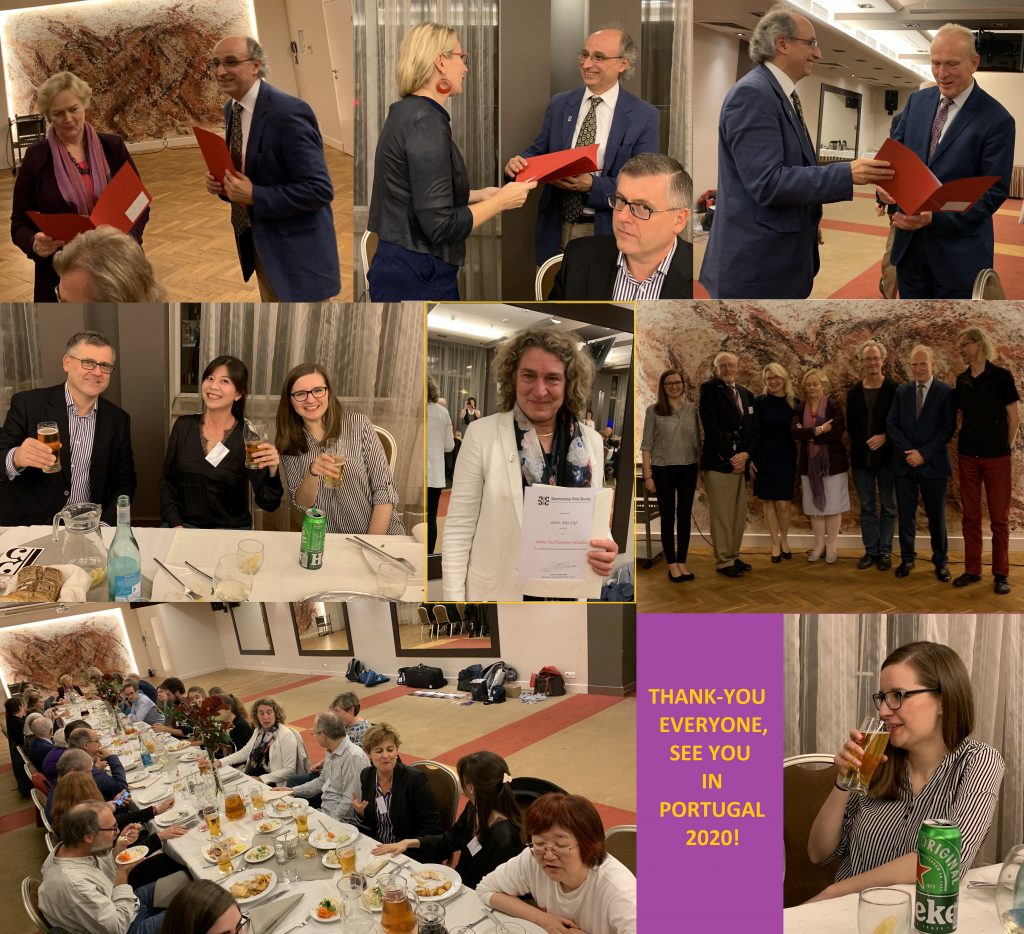 Signing off from Poznan,
Signing off from Poznan,
your intrepid bloggers,
– Karin and Kristofer





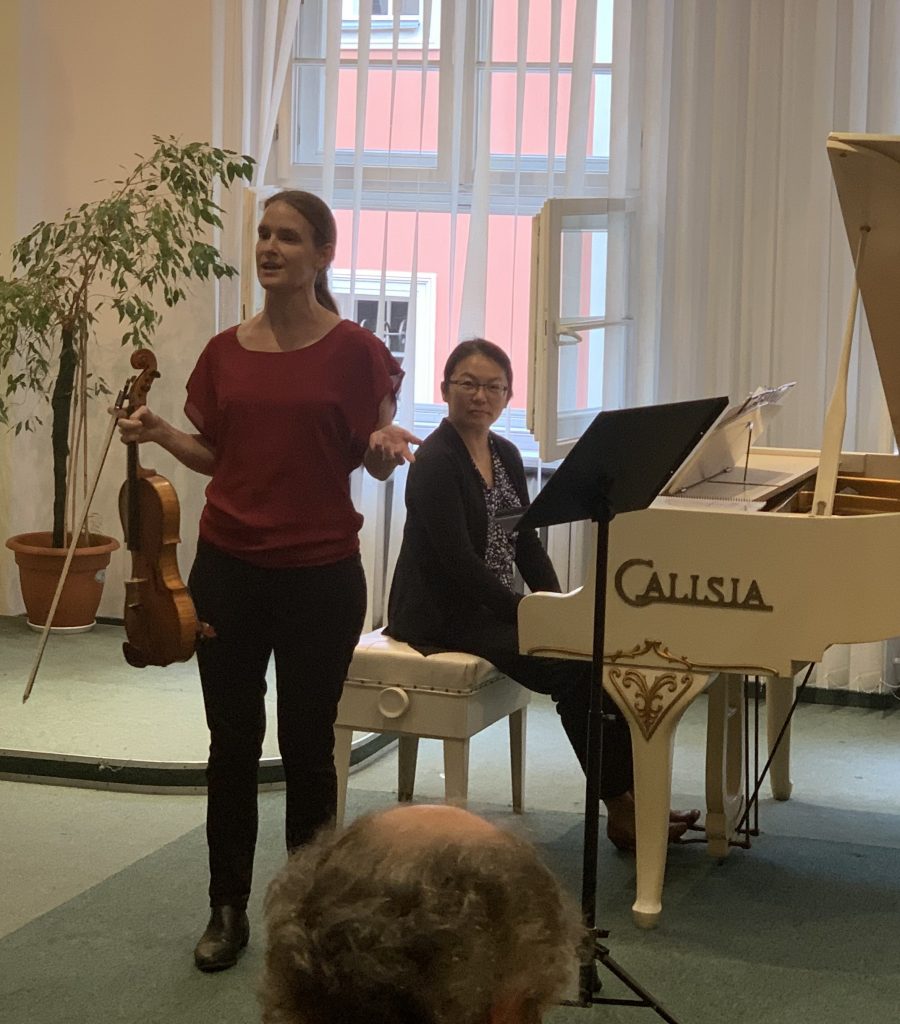
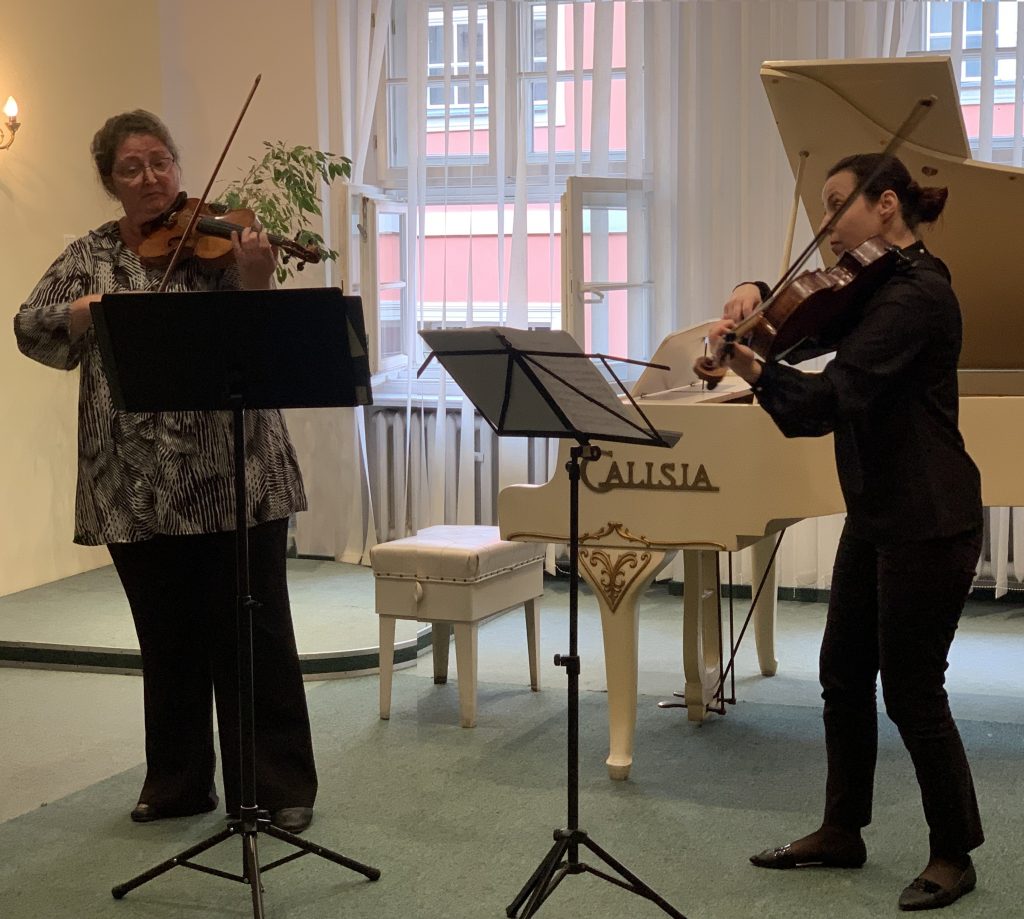
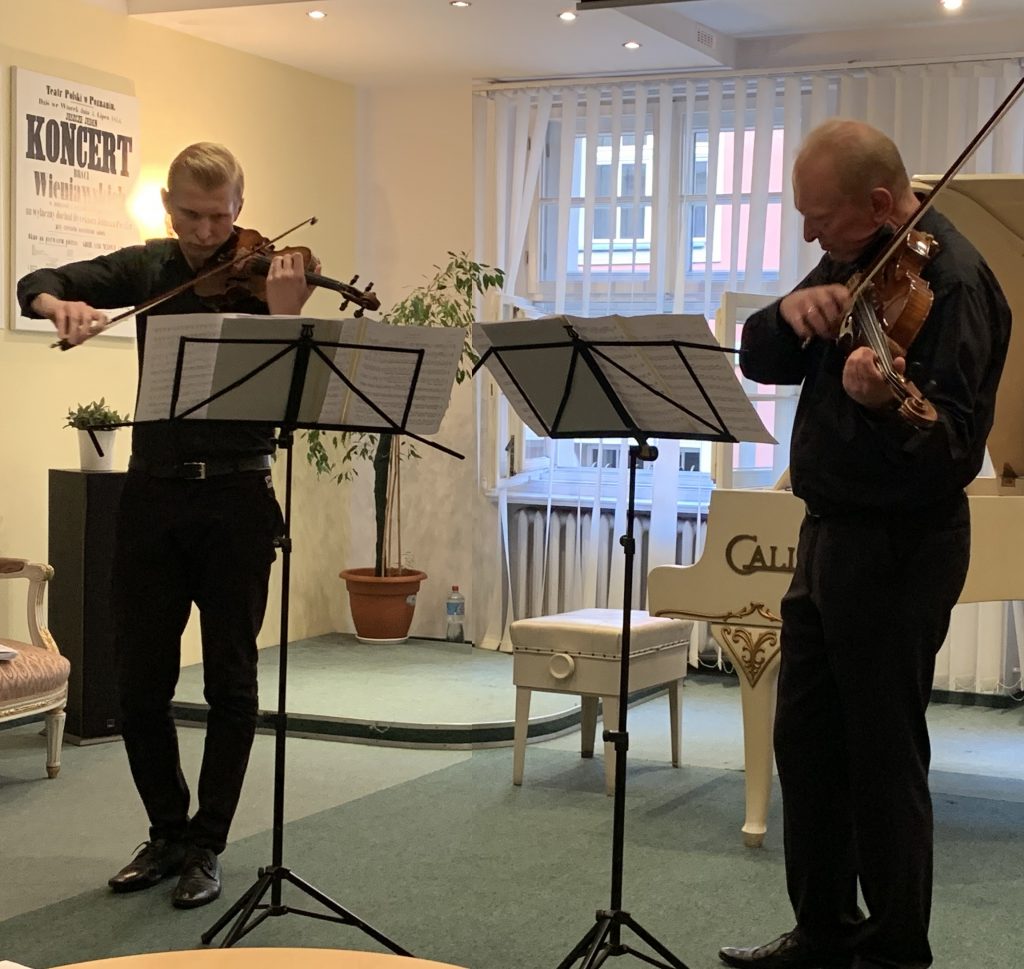
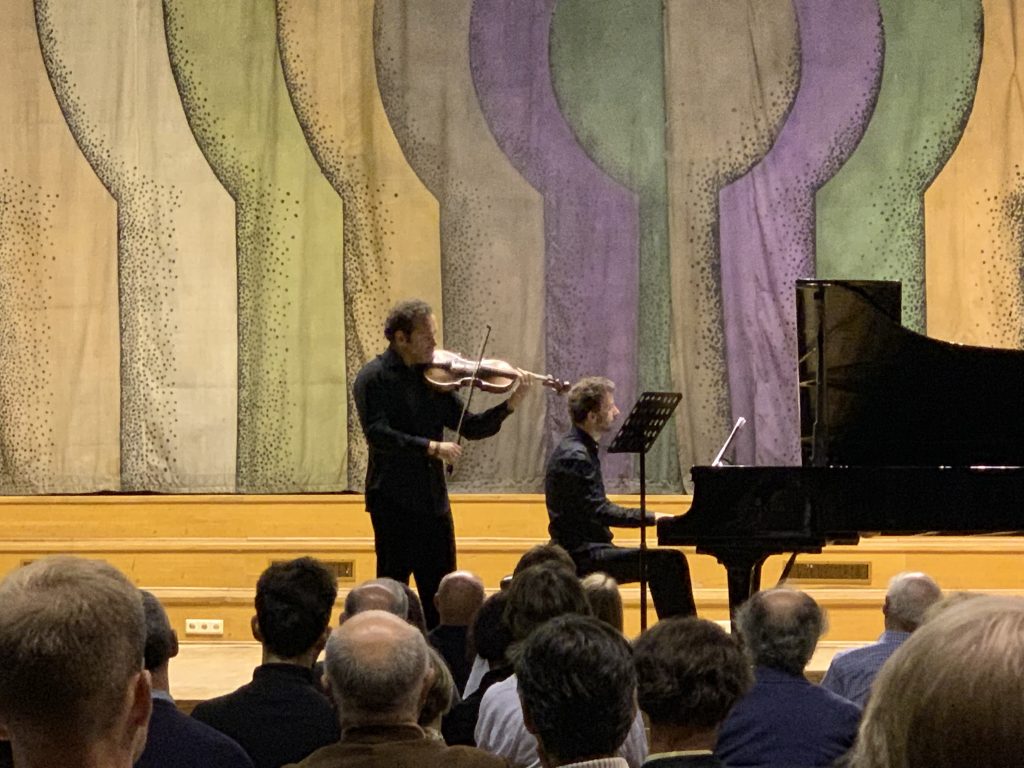

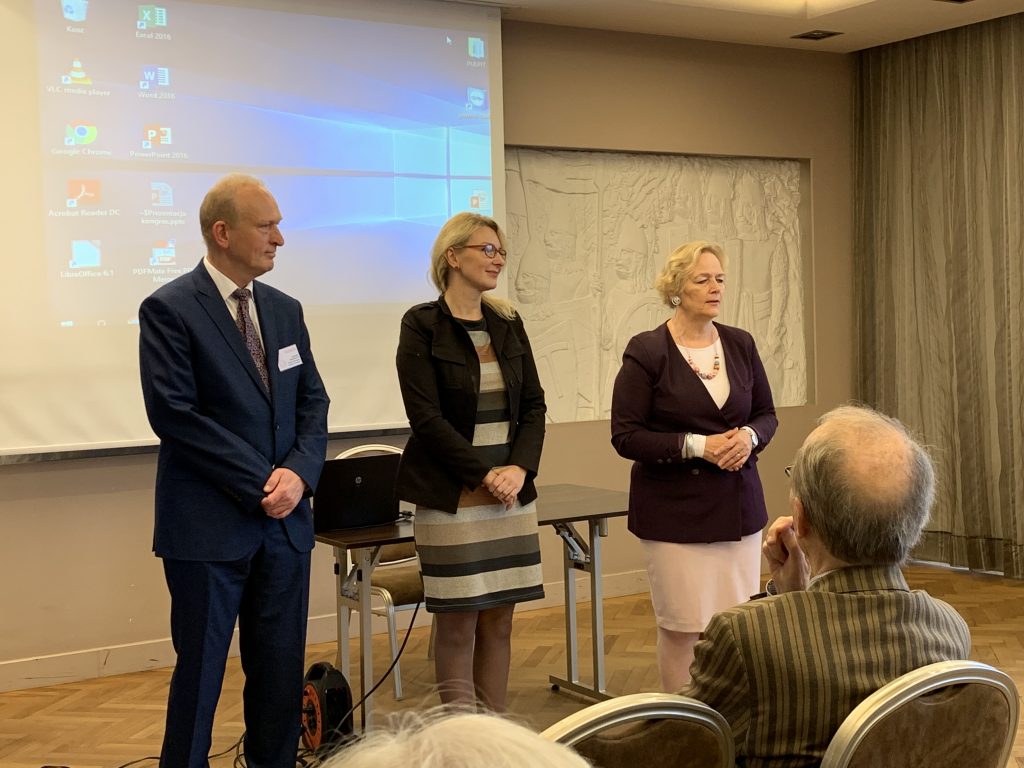

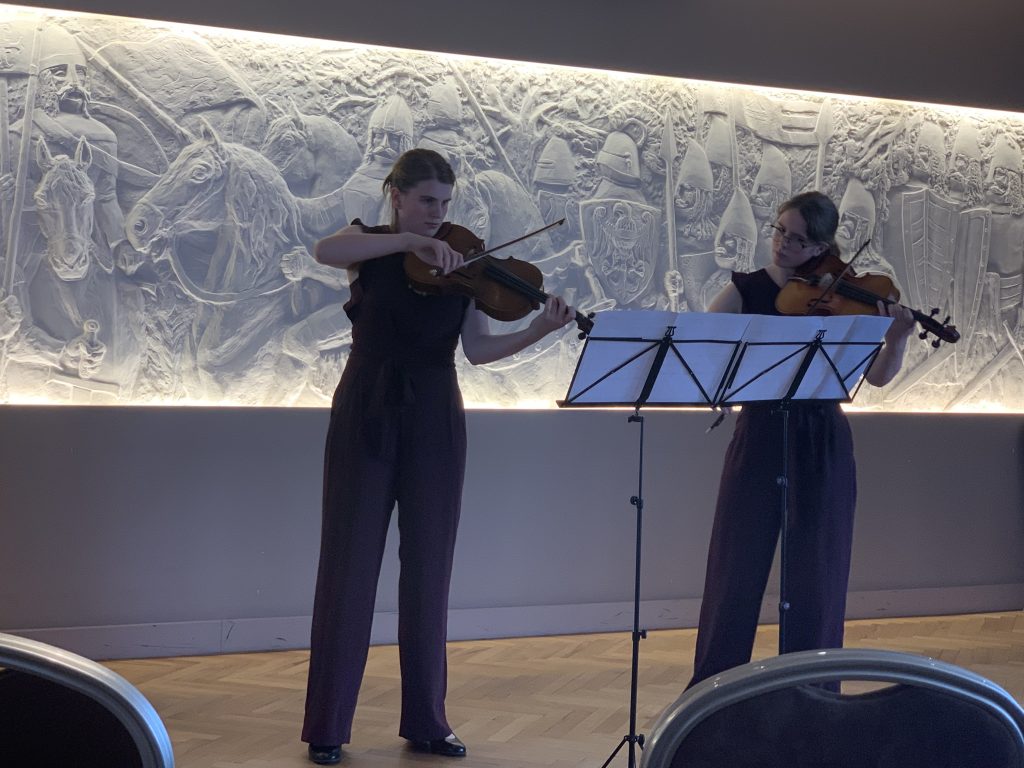
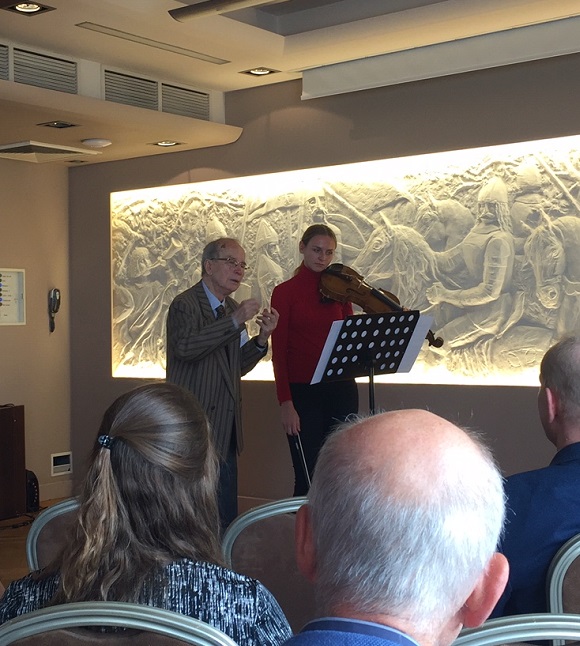
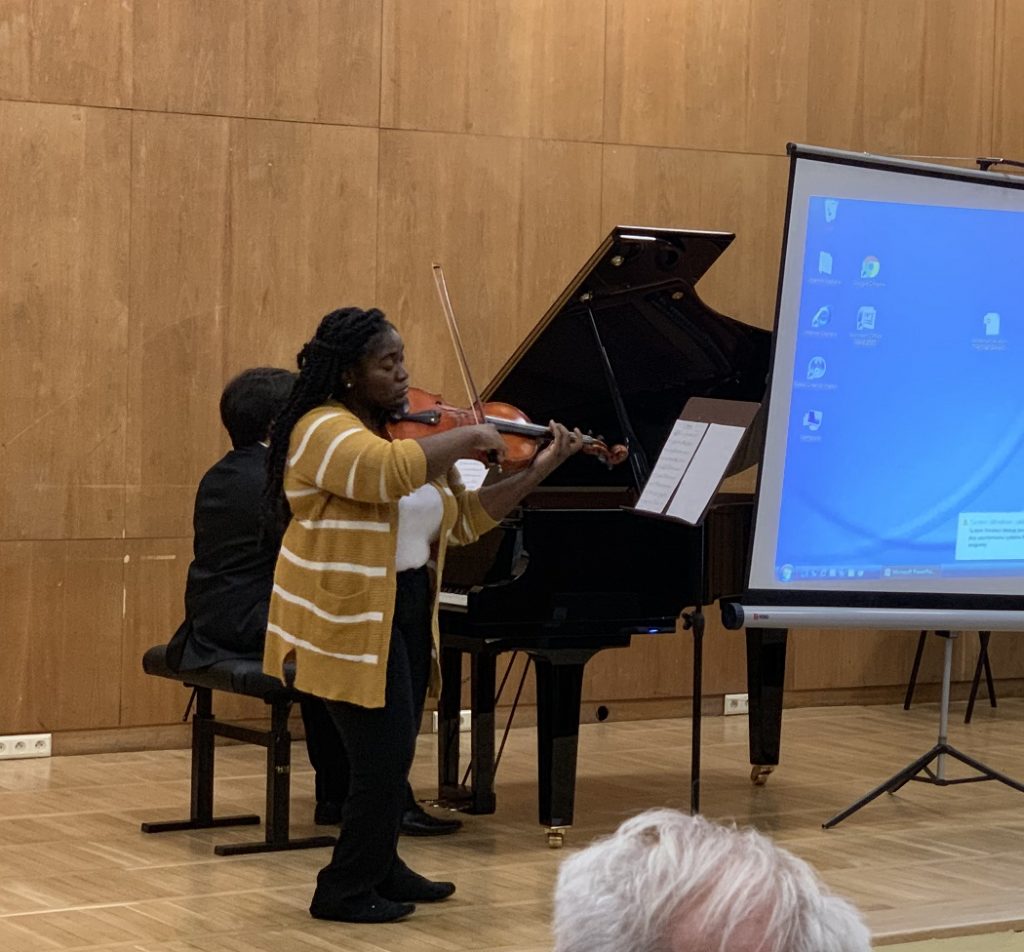


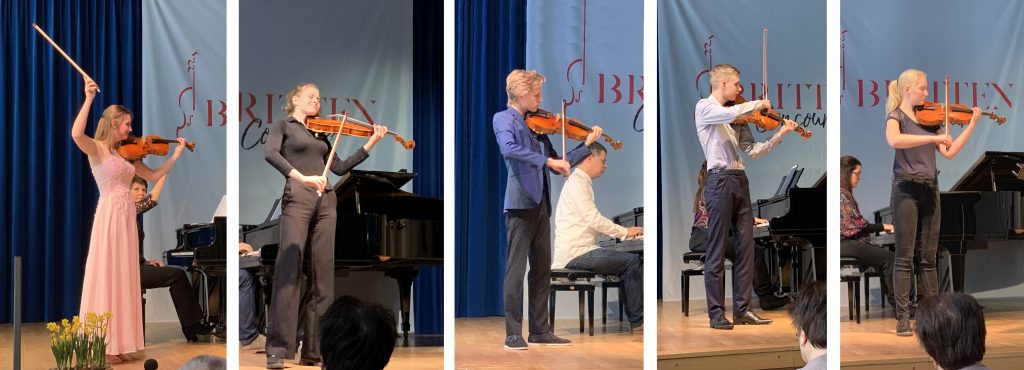
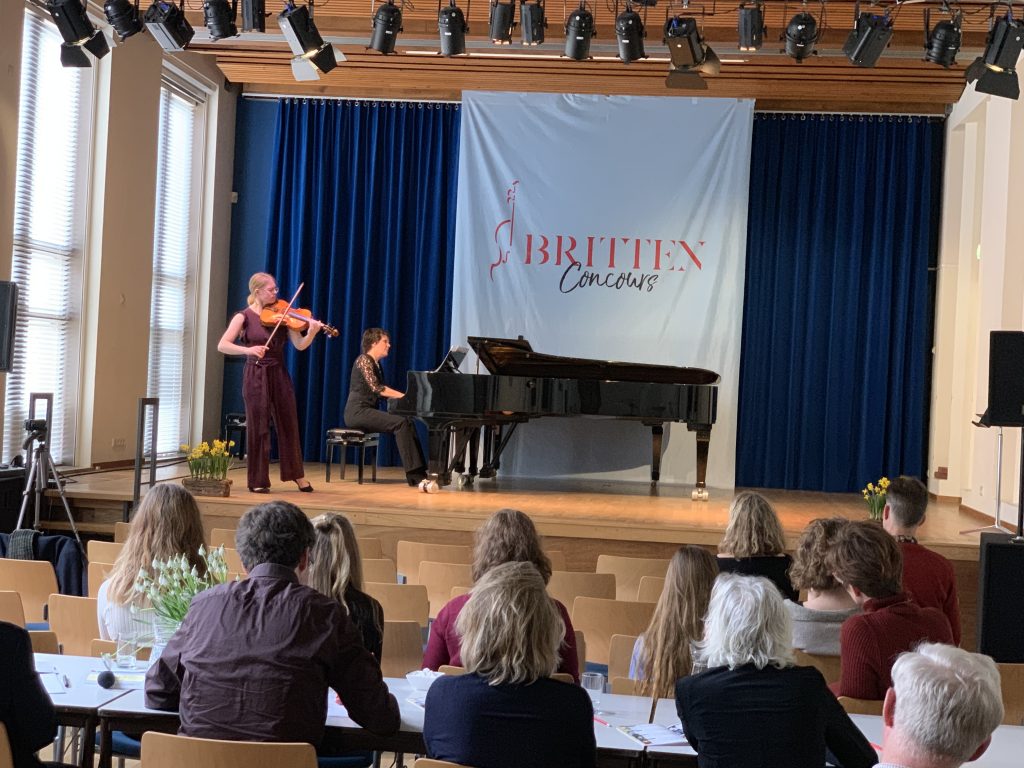

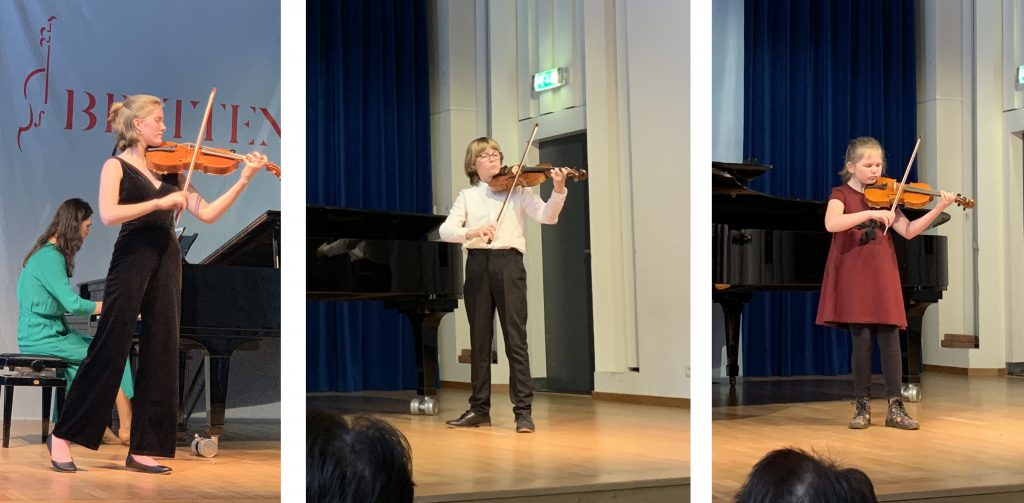
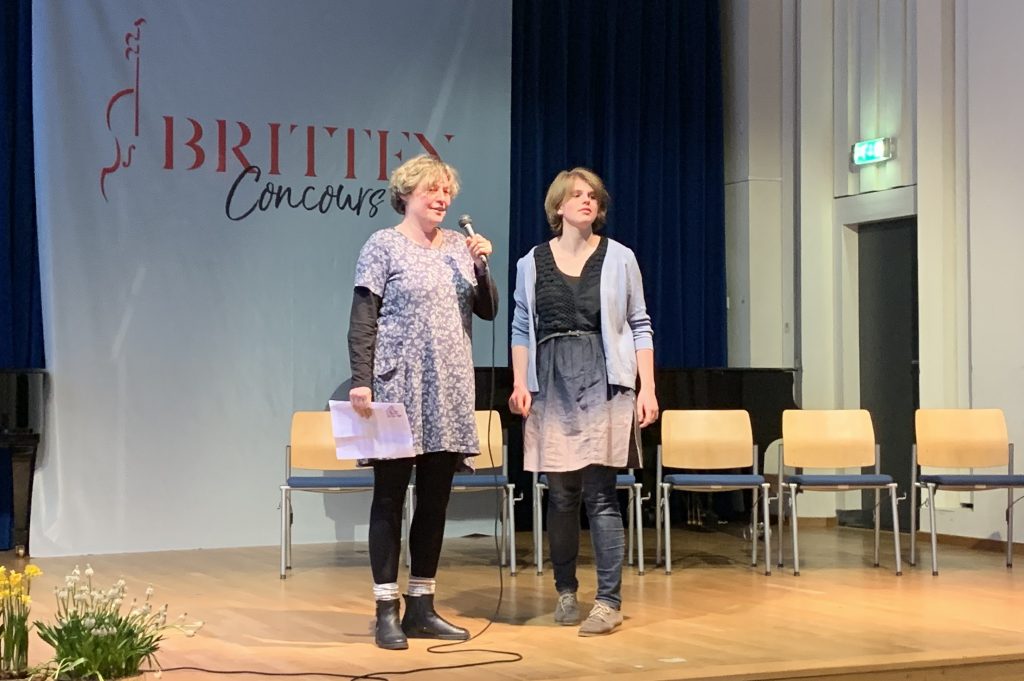
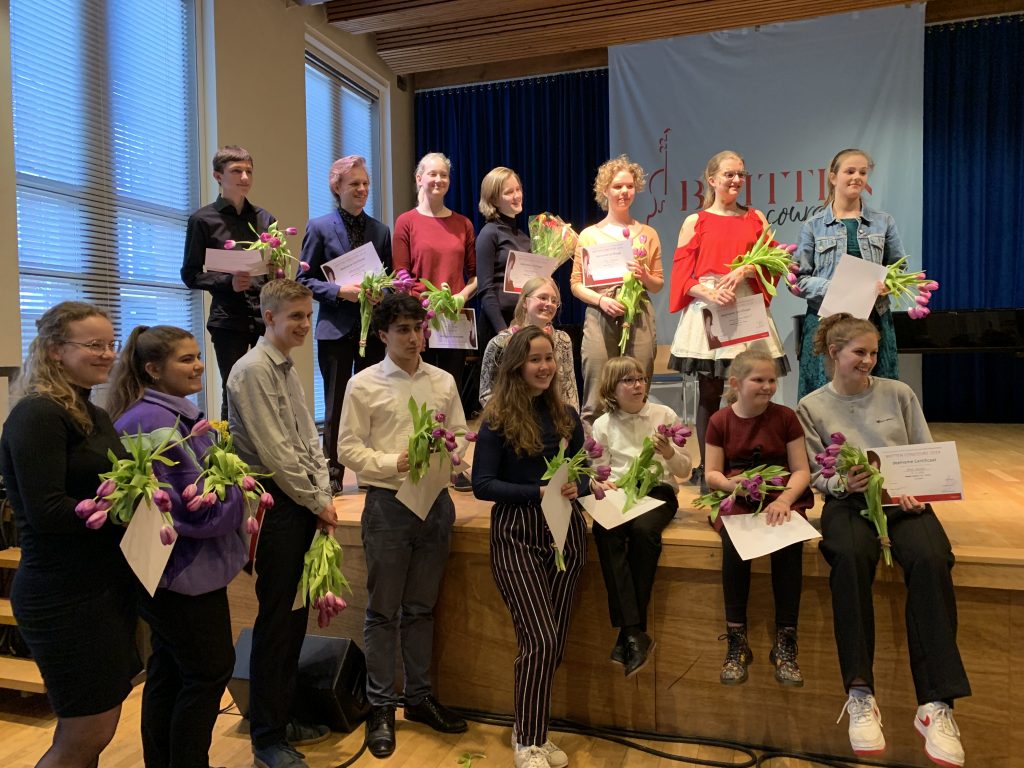
 De Schotse violiste Catherine Manson speelde op zondagavond 14 oktober met het Apollo Ensemble een programma rond “De Zweedse Mozart” ter afsluiting van een klein internationaal tournee. De Zweedse Mozart was de bijnaam van Joseph Martin Kraus (1756-1792), werkzaam aan het Zweedse hof van Gustaf III. Hij was tijdgenoot van Mozart en bewonderaar van Haydn. Tijdens zijn Grand Tour door Europa schreef Kraus zijn zelden te horen Altvioolconcert in C, VB 153b. Dit Altvioolconcert werd in het programma “De Zweedse Mozart” voorafgegaan door een Symfonie van Kraus en afgesloten met werk van Mozart en Haydn.
De Schotse violiste Catherine Manson speelde op zondagavond 14 oktober met het Apollo Ensemble een programma rond “De Zweedse Mozart” ter afsluiting van een klein internationaal tournee. De Zweedse Mozart was de bijnaam van Joseph Martin Kraus (1756-1792), werkzaam aan het Zweedse hof van Gustaf III. Hij was tijdgenoot van Mozart en bewonderaar van Haydn. Tijdens zijn Grand Tour door Europa schreef Kraus zijn zelden te horen Altvioolconcert in C, VB 153b. Dit Altvioolconcert werd in het programma “De Zweedse Mozart” voorafgegaan door een Symfonie van Kraus en afgesloten met werk van Mozart en Haydn.